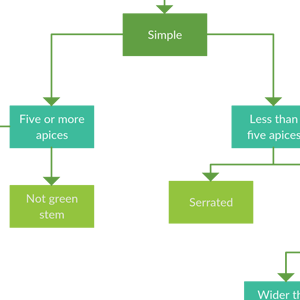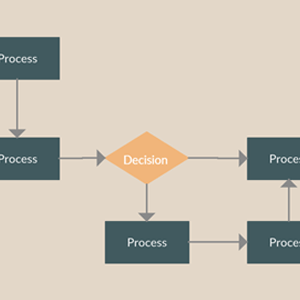Construction and Use of Dichotomous Keys
 • Biological keys are sets of statements that act as clues leading to the identification of an organism.
• Biological keys are sets of statements that act as clues leading to the identification of an organism. - How to make a dichotomous key using microsoft word. How to make a dichotomous key using microsoft word.
- What is a dichotomous key?. A biological device (tool) which enables one to identify an organism by progressively opting between two alternative observable characteristics Necessity of using a dichotomous key. used to identify organisms quickly and accurately. by following the statements in the key we are able to identify each organism on the basis of a characteristic which is not to.
• By following the keys we can be able to place an organism in its group.
• The most common key is the dichotomous key.
Dichotomous keys is a diagram used in classification of organism. Dichotomous keys are often used in field guides to help users accurately identify a plant or animal. VP Online Diagrams comes with a rich set of diagram templates. You may start with a blank diagram or a pre-made Dichotomous keys template.
• This is a biological tool for identification of unknown organisms.
• The word dichotomous means branching into two.
• A single characteristic is considered at a time.
• Two contrasting statements are put forward to describe the characteristics in such a way as to separate the organisms.
• This continues until all the organisms have been identified.
Rules Used to Construct a Dichotomous Key

• Use morphological characteristics as far as possible e.g. type of leaf - simple or compound.
• Select a single characteristic at a time and identify it by number. 1. Type of leaf. .
• Use identical forms of words for two contrasting statements e.g.:
a) Flowers scented.
b) Flowers not scented.
• Start with a major characteristic that divide the organisms into two large groups then proceed to lesser variations that would separate the organisms further into smaller groups.
• Use positive statements especially the first one.
• Avoid generalizations e.g. short plants. Be specific in your description e.g.:
a) Plants above 1m tall.

b) Plants below 1m tall.
Some Common Features Used for Identification
In Plants
Leaves
1. Type of leaf Leaf
Compound leaves.
• Simple leaf
• Trifoliate
• Pinnate

• Type ofleaf margin.
Type of venation.
• Type ofleaf arrangement on stem.
• The colour of leaf.
• The texture ofleaf; whether hairy or smooth.
• Shape of the leaf e.g. palmate.
Stem
• Type of stem - woody or herbaceous.
Dichotomous Key Maker
• Shape of stem - cylindrical or rectangular.• Texture of stem smooth or spiny.
Infloresence
• Are flowers terminal or lateral
• For each flower:
• Is the flower regular or irregular?
Online Dichotomous Key
• Number of floral parts for each whorl.
• Are floral parts free or fused?
Roots
• Type of root system- Taproot or fibrous?
• Function of the root.

In Animals
Features used to identify animals:
• Type of mouthparts.
• Type of skeleton.
• Presence or absence of antennae.
• Body segmentation.
• Body covering: scales, fur, hair or feathers.
• Number of body parts.
• Locomotory structures: legs, wings and fins.
• Presence or absence of vertebral column.